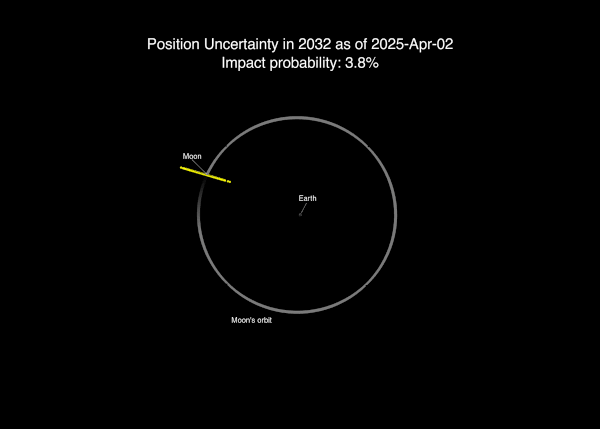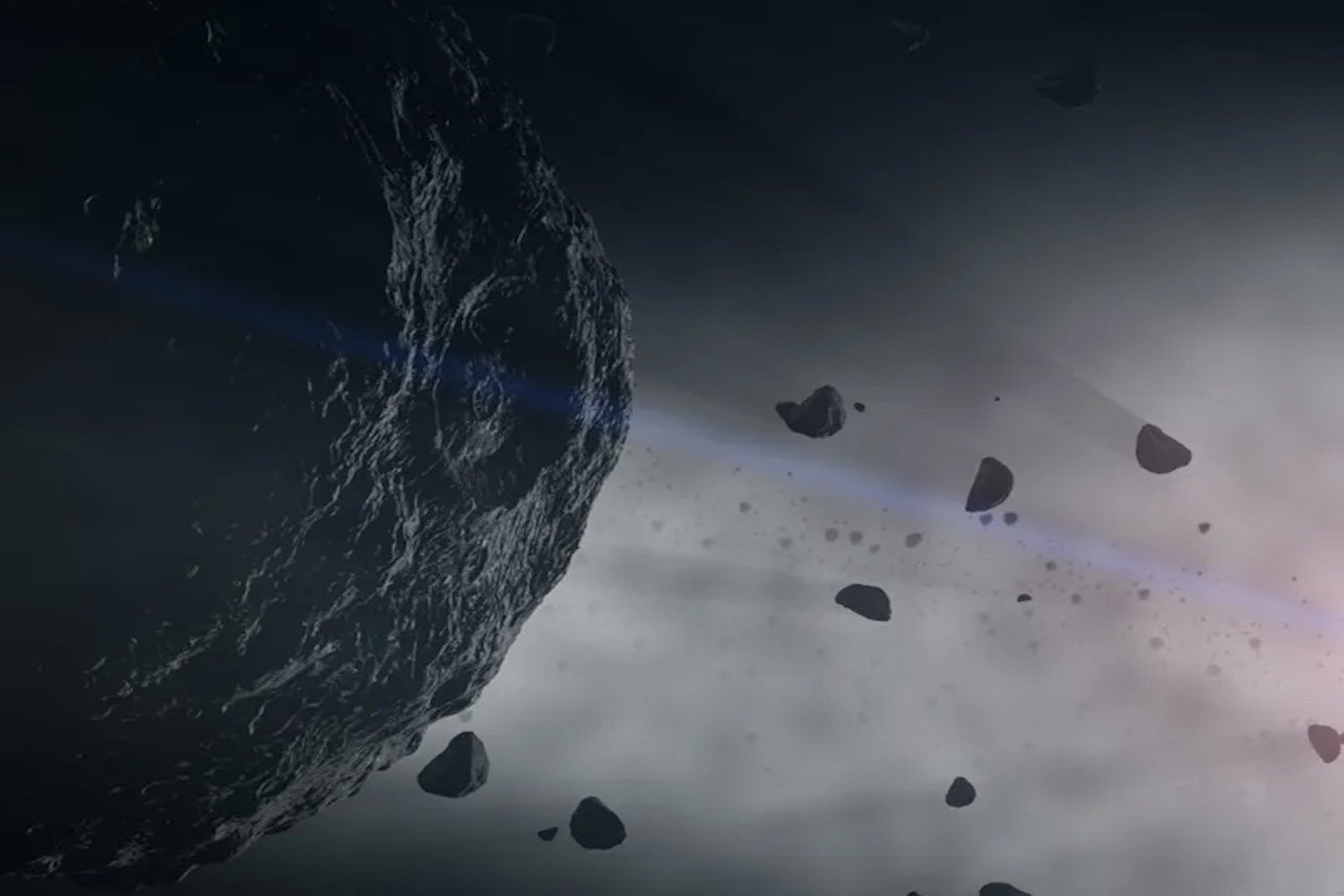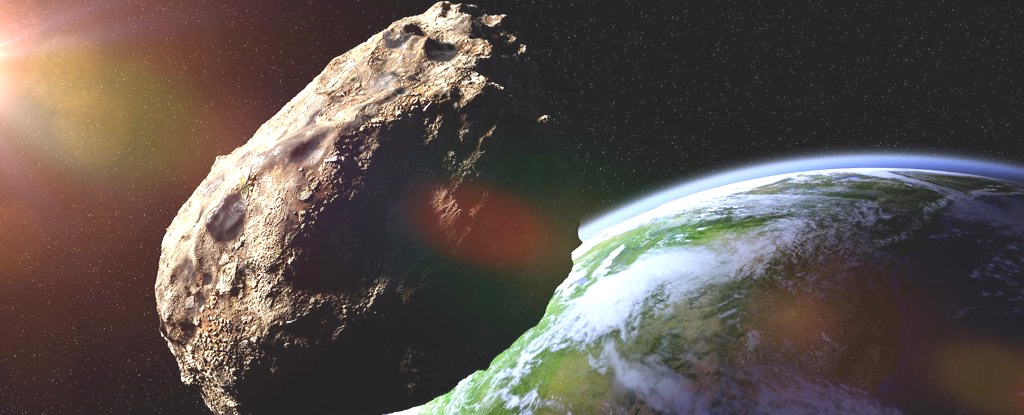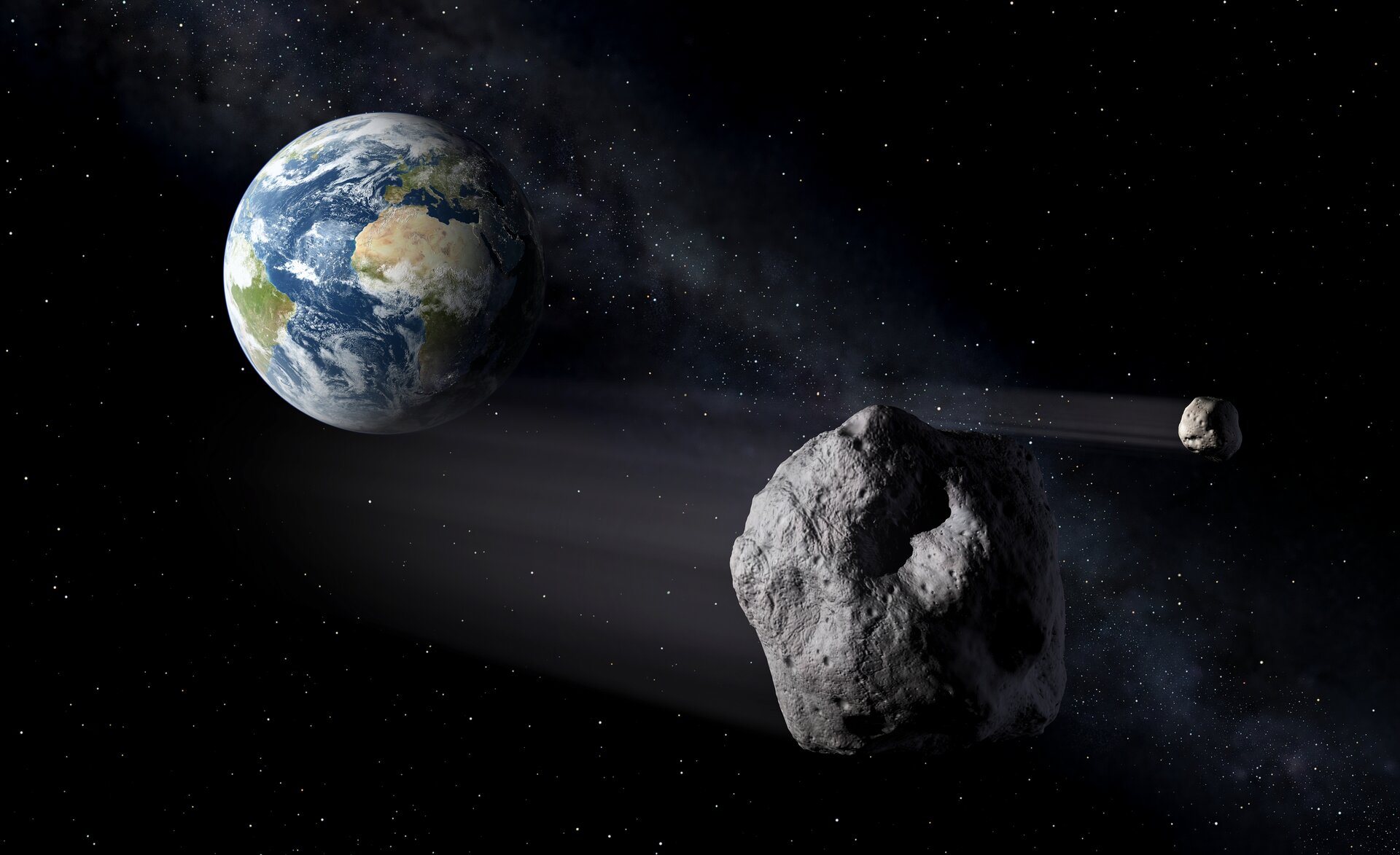
On April 2, 2025, NASA said that new data from the Webb space telescope and ground-based telescopes suggested a 3.8% chance of a moon strike.

Bennu has a 1-in-2,700 chance of colliding with Earth in 2182, causing a global winter and drought.

Asteroid, 2024 YR4, is on a path that might lead to a collision with our planet on 22 December 2032. Calculations suggest there is currently around a 1-in-77 chance that the asteroid will crash into our planet at that time.

If Earth is going to be blown to bits by an asteroid, it'd be nice to have some advance warning and a newly developed equation gives us a better chance of an early heads up.

Two large asteroids will safely pass Earth this week, a rare occurrence perfectly timed to commemorate this year's Asteroid Day.

While our census of hazardous NEOs is not nearly complete, we do have reliable maps of nearly all of the potentially hazardous asteroids larger than a kilometer (0.6 mile) across.

An asteroid large enough to destroy a city has passed between the orbits of the Earth and the Moon, missing both.

There was a huge weakness in our asteroid defense system when only one of the hemispheres was covered by telescopes that constantly scan the sky. Now NASA funded two more telescopes in the southern hemisphere.

Working alongside its northern-hemisphere partner telescope, the ESAs Test-Bed Telescope 2 (TBT2) at La Silla Observatory in Chile will keep a close eye on the sky for asteroids that could pose a risk to Earth.

Asteroid 99942 Apophis had been identified as one of the most hazardous asteroids. The near-Earth object was thought to pose a slight risk of impacting Earth in 2068, but now radar observations have ruled that out.

The European Very Large Telescope participated in test coordinated by the International Asteroid Warning Network, successfully targeting, tracking and imaging a double asteroid as it flew within 5.2 million km of Earth on 25 May.

According to a new analysis, the number of undiscovered and potentially-hazardous asteroids is lower than previously thought.